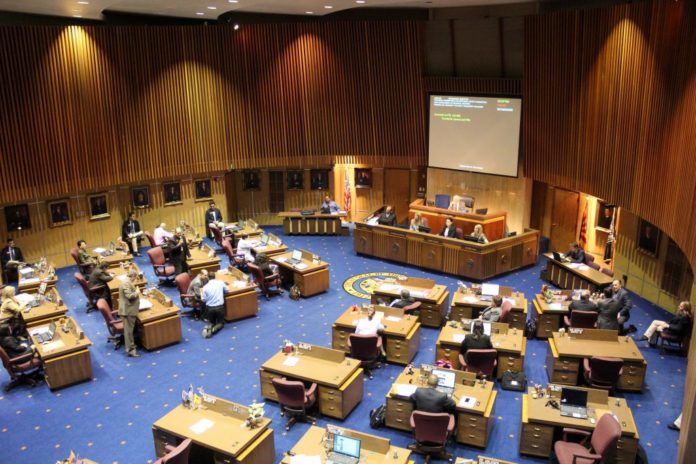PHOENIX (AP) — Legislation quickly passed last year to enable seven Arizona children to continue attending a private New Mexico school using the state’s voucher program would expand to cover all children living on the state’s American Indian reservations under a contentious proposal approved by a Senate committee Tuesday.
Proponents called the legislation a narrow fix focused on a handful of children attending a school across the state border from Window Rock, Arizona. Opponents, including leaders of a group that blocked a statewide expansion of the private school voucher program called Empowerment Scholarship Accounts, called it a slippery slope that would allow a massive expansion.
Republican Sen. Sylvia Allen called her legislation “a simple bill about helping some children to be able to continue to go to the school that the previous Department of Education had given a waiver to allow them to go to.”
“It’s not about expansion of ESA, it’s not about all the other things we turned this into,” Allen said.
The proposal is billed as a permanent fix to a one-year waiver enacted last year after the superintendent of public instruction discovered that seven students were attending the Hilltop Christian School in Tse Bonito, New Mexico, less than a mile from the Arizona state line.
Superintendent Kathy Hoffman, a Democrat, set off a firestorm among school voucher backers last year. That’s when she sent letters to parents telling them they had to repay tuition the state had paid because state law requires school vouchers only to be spent to attend Arizona schools. Republican Gov. Doug Ducey hailed the temporary law and repeatedly said he wants a permanent fix.
The emergency fix only applied to those children currently attending the school. But the permanent proposal that passed Allen’s Education Committee on a 6-3 party-line vote Tuesday and now moves to the full Senate covers any child living on an Arizona reservation if they attend a school within 2 miles of its border.
“That one ’weird situation″ was on one tiny part of the state,” said Dawn Penich-Thacker, a spokeswoman for Save Our Schools Arizona, a group that backed a 2018 referendum where voters soundly rejected expanding vouchers to all Arizona students. “This bill says that any state with whom we share a reservation, which is all of them, including Mexico, would be able to use these tax dollars in their state at their private schools.”
That analysis was backed by a supporter of the bill, Sydney Hay, a longtime voucher supporter. She testified that the proposal didn’t expand Arizona’s voucher program, since any child living on a reservation already qualifies, while noting that it wasn’t limited to just those children currently enrolled.
“The bill allows for other children because to be constitutional it can’t be special legislation that only deals with certain people,” Hay said. “So other children in the same circumstance may be able to attend this school. But again they’re children who are eligible by virtue of living on tribal land.
That’s just the “slippery slope” that Sen. Jamescita Peshlakai fears. The Democrat represents part of the Navajo Nation.
“I think right now it’s simply a vehicle to start the empowerment scholarship expansion beyond the borders of Arizona,” she said in an interview. “It will set a precedent and then that will be worked on to expand, expand, expand, until there’s no end.”
There is a reason school voucher opponents, who say allowing public dollars for private schools siphons cash from public schools, fear an expansion. The original 2011 program applies only to disabled students but was expanded over the years to include several other groups, including all children living on reservations.
Republican Sen. Kate Brophy McGee, who supported the universal voucher repeal, said she was coming down on the side of the bill being a minor tweak.
“In my opinion this bill is not an ESA expansion – it is not” she said before voting yes. “It is a clarification.”
Republished with the Permission of the Associated Press.













